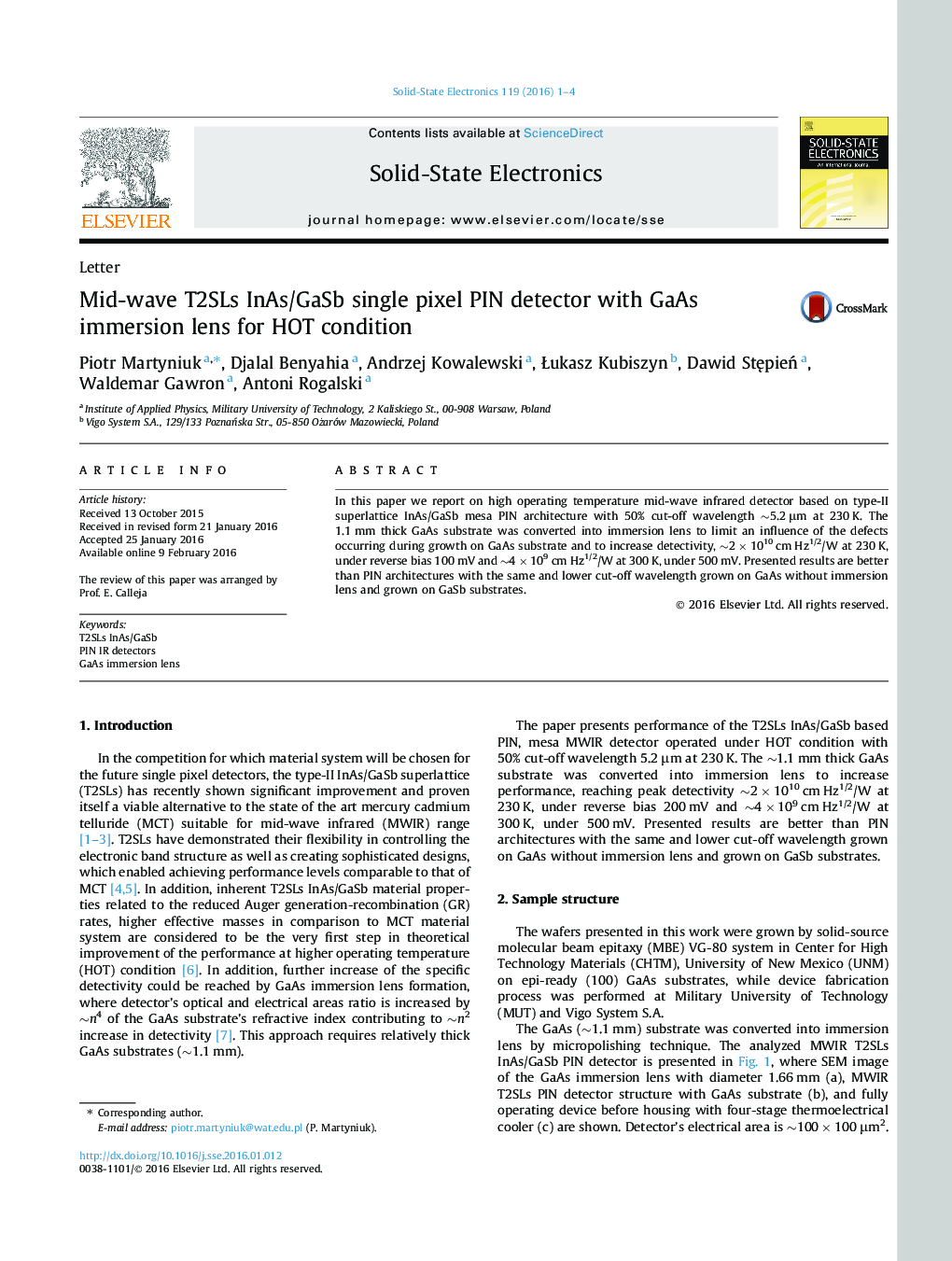| Article ID | Journal | Published Year | Pages | File Type |
|---|---|---|---|---|
| 747689 | Solid-State Electronics | 2016 | 4 Pages |
•We presented the mid-wave single (λ50% cut-off = 5.2 μm) pixel mesa PIN T2SLs InAs/GaSb detector with ∼1.1 mm GaAs substrate converted into immersion lens to increase detectivity by ∼10.•At T = 230 K reached by thermoelectrical cooling, presented detector exhibits detectivity, D* ∼ 2 × 1010 cm Hz1/2/W, under reverse bias 200 mV.•At T = 300 K presented detector exhibits detectivity, D∗ ∼ 4 × 109 cm Hz1/2/W at 300 K, under 500 mV.•Presented results are higher than PIN architectures with the same and lower cut-off wavelength grown on GaAs without immersion lens and grown on GaSb substrates.•Detectivity for MWIR (λ50% cut-off = 5.1 μm) multi-layer MCT Auger suppressed, unbiased heterostructure with comparable λ50% cut-off = 5.2 μm, GaAs immersion lens is one order of magnitude higher than PIN T2SLs InAs/GaSb due to SRH defects.
In this paper we report on high operating temperature mid-wave infrared detector based on type-II superlattice InAs/GaSb mesa PIN architecture with 50% cut-off wavelength ∼5.2 μm at 230 K. The 1.1 mm thick GaAs substrate was converted into immersion lens to limit an influence of the defects occurring during growth on GaAs substrate and to increase detectivity, ∼2 × 1010 cm Hz1/2/W at 230 K, under reverse bias 100 mV and ∼4 × 109 cm Hz1/2/W at 300 K, under 500 mV. Presented results are better than PIN architectures with the same and lower cut-off wavelength grown on GaAs without immersion lens and grown on GaSb substrates.
